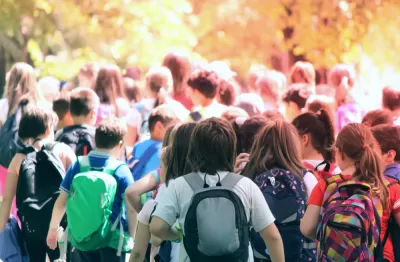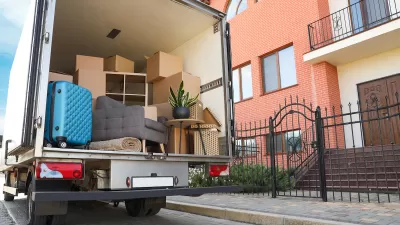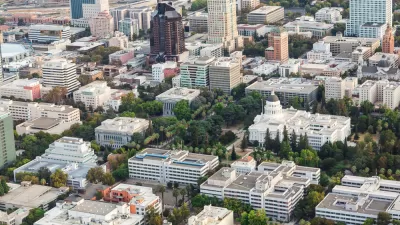The 12-month period ending July 1, 2019, saw the lowest population growth rate, 0.5 percent, since 1918, reported the U.S. Census Bureau on Monday. Natural increase (births minus deaths) was the lowest in decades. Ten states saw population declines.

The population of the U.S. was 328,239,523 on July 1, 2019, having grown by 1,552,022 people since July 1, 2018, according to the U.S. Census Bureau's national and state population estimates released on Dec. 30 (source article). By contrast, population growth exceeded 2 million people from July 2017 to July 2018, a growth rate of 0.62 percent, and that was an 80-year low.
To see an estimate of today's population, click on the bureau's U.S. and World Population Clock.
Here's where the growth came from:
- Between 2018 and 2019, natural increase was 956,674, reflecting 3,791,712 births and 2,835,038 deaths. It was the first time the number "dropped below 1 million in decades.” said Dr. Sandra Johnson, a demographer/statistician in the Population Division of the Census Bureau.
- Nationally, net international migration continues to decrease, falling to 595,348 between 2018 and 2019. The rate has been gradually decreasing each year since 2016, the year before President Trump took office“
"The immigration is really the safety valve for us going forward,” William H. Frey, a noted demographer and senior fellow at the Brookings Institution, told Neil Vigdor of The New York Times on Monday. "I think that immigration is an important part of what we have to think about going forward.”
Frey also told the Associated Press that the growth rate was the slowest since the last year of World War I, 1917 to 1918.
Population losers
The Northeast region, the smallest of the four Census Bureau regions [pdf], saw population decrease for the first time this decade, declining by 63,817 or -0.1%, largely due to negative net domestic migration of 294,331 people. The region includes four of the 10 states that lost population: New York, Connecticut, New Jersey and Vermont.
What's interesting about Vermont was that it was one of only eight states that had more births this year than last, but also one of only four states that had more deaths than births, also called natural decrease.
Three states in the South lost population: West Virginia, Louisiana and Mississippi; two in the West: Hawaii and Alaska, and Illinois in the Midwest.
New York lost the most population, almost 77,000 people (-0.4%), an increase of over 28,000 from the prior year, and the fourth consecutive year of population decline, according to Vigdor, while West Virginia saw the largest percentage decline of 0.7%, or (-12,144), an increase of almost 1,000 from last year's loss.
Population gainers
Idaho, Nevada, and Arizona led the nation, respectively, in the rate of increase, while Texas, Florida, and Arizona led the nation, respectively, in numeric growth. For detailed information, click on the links below to download the appropriate table, also available in the source article.
- Table 1. Top 10 Most Populous States: 2019
- Table 2. Top 10 States in Numeric Growth, 2018 to 2019
- Table 3. Top 10 States in Percent Growth, 2018 to 2019
Related in Planetizen:
-
Population Growth at 80-Year Low, December 25, 2018
-
Which States Grew Fastest; Which States Lost Population, December 21, 2017
-
Which States Grew and Which Didn't, December 21, 2016
FULL STORY: 2019 U.S. Population Estimates Continue to Show the Nation’s Growth Is Slowing

Trump Administration Could Effectively End Housing Voucher Program
Federal officials are eyeing major cuts to the Section 8 program that helps millions of low-income households pay rent.

Planetizen Federal Action Tracker
A weekly monitor of how Trump’s orders and actions are impacting planners and planning in America.

Ken Jennings Launches Transit Web Series
The Jeopardy champ wants you to ride public transit.

California Invests Additional $5M in Electric School Buses
The state wants to electrify all of its school bus fleets by 2035.

Austin Launches $2M Homelessness Prevention Fund
A new grant program from the city’s Homeless Strategy Office will fund rental assistance and supportive services.

Alabama School Forestry Initiative Brings Trees to Schoolyards
Trees can improve physical and mental health for students and commnity members.
Urban Design for Planners 1: Software Tools
This six-course series explores essential urban design concepts using open source software and equips planners with the tools they need to participate fully in the urban design process.
Planning for Universal Design
Learn the tools for implementing Universal Design in planning regulations.
Ada County Highway District
Clanton & Associates, Inc.
Jessamine County Fiscal Court
Institute for Housing and Urban Development Studies (IHS)
City of Grandview
Harvard GSD Executive Education
Toledo-Lucas County Plan Commissions
Salt Lake City
NYU Wagner Graduate School of Public Service




























